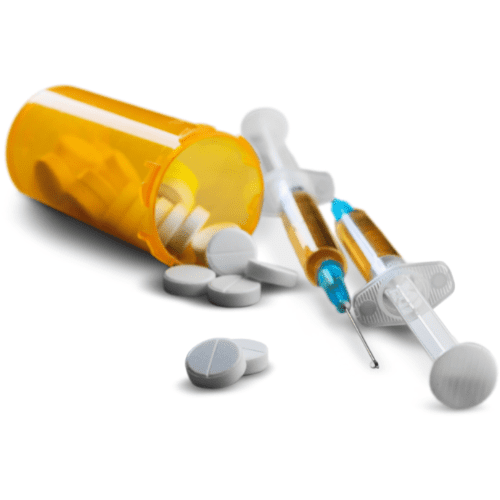[dropcap]G[/dropcap]ov. Andrew Cuomo urged New Yorkers to take precautions against potential flooding in the wake of warmer temperatures and freezing rain expected across the state Thursday and Friday. Snow melt and rain will cause many rivers and streams to rise, potentially breaking ice layers causing ice jams and localized flooding with water covered roads, especially in low lying areas and urban and poor drainage areas.
Freezing rain which will transition into snow is expected through the weekend causing hazardous driving conditions, especially on untreated surfaces with isolated to scattered power outages possible. Sign up for NY Alerts at users.nyalert.gov to get immediate alerts on flood warnings and severe storms.
“This unusual change in temperature can be dangerous this time of year, as ice on roads and in waterways melt, and in order to ensure the safety of residents and travelers, I have directed state resources to be ready in advance for whatever Mother Nature brings our way,” Cuomo said. “I am urging all New Yorkers to stay tuned-in to local weather reports and prepare for potential flooding that may result from warm temperatures and freezing rain expected through the weekend.”
The Thruway Authority encourages motorists to download its mobile app which is available to download for free on iPhone and Android devices. The app provides motorists direct access to real-time traffic and navigation assistance while on the go. Motorists can also sign up for TRANSalert e-mails which provide the latest traffic conditions along the Thruway here. For real-time updates, motorists can follow @ThruwayTraffic on Twitter or by visiting thruway.ny.gov to see an interactive map showing traffic conditions for the Thruway and other New York state roadways.
Snowplows travel at about 35 mph—which in many cases is lower than the posted speed limit—in order to ensure that salt being dispersed stays in the driving lanes and does not scatter off the roadways. The safest place for motorists is well behind the snowplows where the roadway is clear and salted.
Motorists are reminded to check 511NY by calling 511, or visiting 511ny.org before traveling. The free service allows users to check road conditions and transit information. Mobile users can download the free 511NY mobile app from the iTunes or Google Play stores. The app features drive mode, which provides audible alerts along a chosen route while (a user is driving, warning them about incidents and construction. Users can set a destination prior to departing and receive information on up to three routes.
Residents affected by a flood that causes an oil spill in or near their homes should contact the DEC Spill Hotline immediately at 1-800-457-7362 to report the spill. If residents suspect that spilled oil is mixing with water flooding their homes, they are advised not to pump the water out into the yard. The oil may spread and contaminate other areas, including nearby wells, waterbodies, and homes.
Oil spills can also contaminate indoor air. The State Department of Health is available to answer questions at 518-402-7810 or 800-458-1158. After hours and on weekends, call 1-866-881-2809. For more information on steps to minimize the damage and finish the cleanup quickly, visit health.ny.gov/environmental/indoors/air/oil_spill_flood.htm.
Below are flood preparation safety tips:
– Learn the safest route from your home or business to high, safe ground should you have to leave in a hurry.
– Develop and practice a family escape plan and identify a meeting place if family members become separated.
– Make an itemized list—as well as potentially photo and video documentation—of all valuables including furnishings, clothing and other personal property. Keep the list in a safe place.
– Stockpile emergency supplies of canned food, medicine and first aid supplies and drinking water. Store drinking water in clean, closed containers.
– Plan what to do with your pets.
– Have a portable radio, flashlights, extra batteries and emergency cooking equipment available.
– Keep your automobile fueled. If electric power is cut off, gasoline stations may not be able to pump fuel for several days. Have a small disaster supply kit in the trunk of your car.
– Find out how many feet your property is above and below possible flood levels. When predicted flood levels are broadcast, you can determine if you may be flooded.
– Keep materials like sandbags, plywood, plastic sheeting and lumber handy for emergency water-proofing.
– Check on your insurance coverage. Homeowners’ insurance policies generally do not cover flood damages. Only flood insurance can protect your home against flood damages. You can purchase flood insurance whether or not you live in a mapped flood zone.
For a list of complete list of weather terms and preparation ideas before during and after a flood, visit the Division of Homeland Security and Emergency Services website at dhses.ny.gov/oem/safety-info/flood/floodprepare.cfm.
Cuomo also offered the following safety tips to prepare for winter travel:
– Preparing your vehicle now will help ensure your vehicle is in good working order when you need it most. Have a mechanic check the following items on your vehicle: battery; wipers and windshield washer fluid; antifreeze; ignition system; thermostat; lights; exhaust system; flashing hazard lights; heater; brakes; defroster; oil level.
– Install good winter tires. Make sure the tires have adequate tread. All-weather radials are usually adequate for most winter conditions. You may also want to carry a set of tire chains in your vehicle for heavy snow condition.
– Keep a windshield scraper and small broom for ice and snow removal and maintain at least a half tank of gas throughout the winter season.
– Finally, plan long trips carefully. Listen to the local media report or call law enforcement agencies for the latest road conditions.
The leading cause of death and injuries during winter storms is transportation accidents. Before driving:
– Give yourself extra time to arrive at your destination. Make sure your car is stocked with emergency items like blankets, a shovel, flashlight and extra batteries, extra warm clothing, set of tire chains, battery booster cables, quick energy foods and brightly-colored cloth to use as a distress flag.
– Keep your gas tank full to prevent gasoline freeze-up.
– If you have a cellphone or two-way radio available for your use, keep the battery charged and keep it with you whenever traveling. If you should become stranded, you will be able to call for help, advising rescuers of your location.
– Make sure someone knows your travel plans.
As you drive:
– Always match your speed to the road and weather conditions.
– Keep your vehicle clear of ice and snow – good vision is key to good driving.
– Plan your stops and keep more distance between cars.
– Remember that snowdrifts can hide smaller children.
(Submitted)







